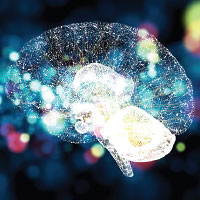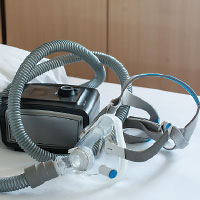Journal Digest: PTSS, Long-Term Memories, Suicide Risk, and More
Reducing Safety Behaviors May in Turn Reduce Posttraumatic Stress

A brief, computer-based intervention that encourages people with posttraumatic stress symptoms to reduce their reliance on safety behaviors may help to reduce posttraumatic stress, according to a study appearing in the Journal of Affective Disorders.
Safety behaviors are actions intended to avoid danger such as sitting in the back of a room or sleeping with the lights on. Though they can relieve stress in the short term, safety behaviors in the absence of a threat perpetuate a heightened threat response in the long term.
For the study, researchers at Florida State University enrolled 75 participants from the university and surrounding community who had experienced at least one traumatic event in their life and had elevated posttraumatic stress symptoms (reflecting a score of ≥25 on the PTSD Checklist for DSM-5). The participants were assigned to one month of either the Safety Behavior Elimination for Traumatic Stress (SBETS) or a psychoeducation program focused on healthy behaviors. SBETS educates users on why safety behaviors are problematic and provides strategies to reduce their use; participants were asked to reduce or eliminate two of their most frequent safety behaviors as part of the treatment.
While the SBETS participants reported less use of their two selected behaviors, their overall use of any safety behaviors did not differ from the psychoeducation group after one month. However, the individuals receiving SBETS showed significantly greater improvements in their posttraumatic stress symptoms relative to the control group.
“These findings are consistent with existing literature, which posits that trauma-related [safety behavior] use maintains [posttraumatic stress symptoms] by preventing the individual from collecting disconfirming evidence,” the researchers wrote. By reducing or eliminating even some behaviors without harm, people can develop more accurate threat estimations, they continued.
Bedford CE, Schmidt NB. Efficacy of a Novel Safety Behavior Elimination Intervention for Posttraumatic Stress Symptoms: Results From a Randomized Controlled Trial. J Affect Disord.2023; 339:640-647.
Anterior Thalamus May Be Conduit for Long-Term Memories

New research appearing in Cell offers biological evidence that the brain’s anterior thalamus may be the gateway through which short-term memories must pass before becoming long-term memories.
Investigators at Rockefeller University in New York and colleagues developed a special memory task so mice could train while in a fixed position, thus enabling brain imaging while memories were being formed. The task used virtual reality technology to simulate a maze that mice traversed while standing on a rotating ball; visual and auditory cues were then paired with either a reward (sugar water) or an unpleasant odor. The mice were trained repeatedly for five days, then retested every 7 to 14 days over 55 days.
Over the first few training sessions, neurons in the hippocampus—-the site where memories are initially formed—were the most active. After about three days, the researchers noticed increased neuronal activity in the anterior thalamus, primarily when the mice were about to receive rewards. After about four weeks, when the mice could reliably choose the maze route that led to the high reward, most brain activity shifted to the anterior cingulate cortex, which stores long-term memories.
To validate the anterior thalamus as a key conduit between short- and long-term memories, the investigators used optogenetics to inhibit the neural circuit connecting the thalamus to the anterior cortex during the first five days of maze training. While these mice had no problems learning how to complete the maze to receive a reward during training, they did not remember the rewards during retesting.
The authors cited neurological case studies that found patients with damage in the anterior thalamus often experience retrograde amnesia (no memories prior to the injury), which further supports this region’s role in memory consolidation.
Toader AC, Regalado JM, Li YR, et al. Anteromedial Thalamus Gates the Selection and Stabilization of Long-Term Memories. Cell. 2023; 186(7):1369-1381.e17.
Suicide Risk May Have Temporal Connections

Deaths by suicide may increase during a full moon, suggests a report in Discover Mental Health.
“An increase in suicides during the full moon could be due to the moonlight affecting vulnerable individuals at a time when there should be dark,” wrote the researchers from the Indiana University School of Medicine.
The researchers examined coroner reports from 776 suicides in Marion County, Indiana, between 2012 and 2016. Of these, 210 occurred within the full moon week, and 566 occurred outside this window; this reflects a 19% increased rate of suicide during the full moon week. This temporal difference was more pronounced among people aged 55 years and older, who had a 38% increased rate of suicide around full moons.
Forty-five people (84% male) who died by suicide had blood samples taken within 24 hours of their death as part of a biomarker study. Analysis of these blood samples revealed significant differences in the expression of certain circadian-related genes previously linked with suicide risk in people who died close to a full moon compared with those who died at other times.
The findings “open the door to therapeutic interventions, whether chronobiological or pharmacological,” the researchers wrote.
Bhagar, R., Le-Niculescu, H., Roseberry, K. et al. Temporal Effects on Death by Suicide: Empirical Evidence and Possible Molecular Correlates. Discov Ment Health. 2023; 3:10.
Psychiatric Drugs Significantly Underused in Jails and Prisons

Mental and other types of medical illnesses tend to be higher among individuals in U.S. jails and prisons than the general public. Yet, these people may be less likely to receive prescription medications for their conditions, according to an analysis in JAMA Health Forum.
Researchers at the Johns Hopkins Bloomberg School of Public Health and colleagues first used IQVIA’s National Sales Perspective to track the distribution of prescription medications to people who were and were not incarcerated in state prisons and jails between 2018 and 2020. Then they used the National Survey on Drug Use and Health (NSDUH) data to estimate the average prevalence of depression, severe mental illness (SMI), and other chronic conditions in this population. The NSDUH does not survey people in jails or prisons, so individuals recently arrested or paroled were proxies for the incarcerated population.
Between 2018 and 2020, people in jails or prisons comprised nearly 1.5% of all depression cases and nearly 2% of all SMI cases. However, only 0.36% of depression prescriptions and 0.48% of SMI prescriptions were distributed to jails and prisons during this same time. Similar disparities between supply and need were seen with medications for conditions such as HIV, which tends to be comorbid with mental illness.
“While many deficiencies in the correctional health care system have been well described, to our knowledge, the present study is the first to use national data to document substantial disparities in receipt of medications for chronic conditions among people who are incarcerated,” the researchers wrote. “These findings may help to explain some of the disparities in health outcomes that are experienced by those who have been previously incarcerated, and they point to opportunities to intervene upstream to preempt such outcomes.”
Curran J, Saloner B, Winkelman TNA, Alexander GC. Estimated Use of Prescription Medications Among Individuals Incarcerated in Jails and State Prisons in the US. JAMA Health Forum. 2023; 4(4):e230482.
Study Adds Evidence On Sleep Apnea’s Link to Cognitive Difficulties

People with obstructive sleep apnea—a disorder in which breathing repeatedly starts and stops during sleep—are known to have higher risks of cognitive problems. Some research has suggested this higher risk may be driven by comorbidities that are common in people with sleep apnea, including obesity, diabetes, and hypertension. A pilot study in Frontiers in Sleep now suggests that severe obstructive sleep apnea alone may be enough to cause cognitive changes in middle-aged adults.
Researchers at King’s College London and colleagues conducted comprehensive cognitive tests (the 23-item Cambridge-Neuropsychological-Test-Automated-Battery) on 34 middle-aged men; 16 had mild obstructive sleep apnea, 11 had severe obstructive sleep apnea, and 7 had no obstructive sleep apnea. None of the participants were obese or had a history of any neuropsychiatric, cardiovascular, or metabolic problems.
The researchers uncovered distinct performance differences among the groups in tasks related to executive function, visuospatial memory, and motor control, with people with severe obstructive sleep apnea having the lowest scores. Problems in all three of these domains have been previously associated with sleep apnea.
The researchers also found that the men with severe obstructive sleep apnea performed worse on a social and emotional task.
“Social and emotional cognition is an important ability to interpret and identify socially relevant information known to be impaired in several psychiatric conditions, including major depressive disorder, and thought to be strongly associated with sleep physiology,” the researchers wrote.
“It is increasingly evident that [obstructive sleep apnea’s]s functional neuropsychiatric impact may go well beyond [its] currently best recognized role in increasing driving and occupational accidents risks,” they added.
Gnoni V, Mesquita M, O’Regan D, et al. Distinct Cognitive Changes in Male Patients with Obstructive Sleep Apnoea Without Co-Morbidities. Front. Sleep. 2023; 2:1097946.
Indigenous South Americans Display Slower Loss of Brain Volume Over Time

Compared with people from industrialized societies, Indigenous South American people show less decline in brain volume as they age, reports a study in PNAS.
Researchers at Chapman University and colleagues made use of brain imaging data available from two Indigenous tribes in Bolivia: the Tsimane and Moseten. Both groups lead physically active lifestyles (for example, hunting, fishing, and gathering); however, the Moseten are slightly more integrated into Bolivian society (for example, they have access to public services such as school and health clinics). The researchers had access to 749 brain scans of people who identified as Tsimane, and 416 brain scans of people who identified as Moseten.
Overall brain volume among the participants followed a similar trajectory as seen in U.S. and European populations: a gradual but continual decline at age 40 that accelerates after age 60. The more acculturated Moseten showed a slightly steeper decline than the Tsimane over time, though both groups had less decline than has been observed in U.S. and European populations.
The researchers also found that the individuals with the highest brain volume at a given age had slightly more body fat and higher non-HDL cholesterol levels than the population average. The researchers suggested that given the high physical demands and infection risks associated with the Indigenous lifestyle, having extra fat reserves is important for brain health, up to a point.
These findings “suggest that there may be optimal levels of food intake, physical activity, and adiposity that maximize brain health and minimize the rate of brain tissue loss with age,” the researchers wrote. “It is also possible that those optima will vary with the exposome and differ across populations.” ■
Kaplan H, Hooper PL, Gatz M, et al. Brain Volume, Energy Balance, and Cardiovascular Health in Two Nonindustrial South American Populations. Proc Natl Acad Sci USA. 2023; 120(13):e2205448120.



